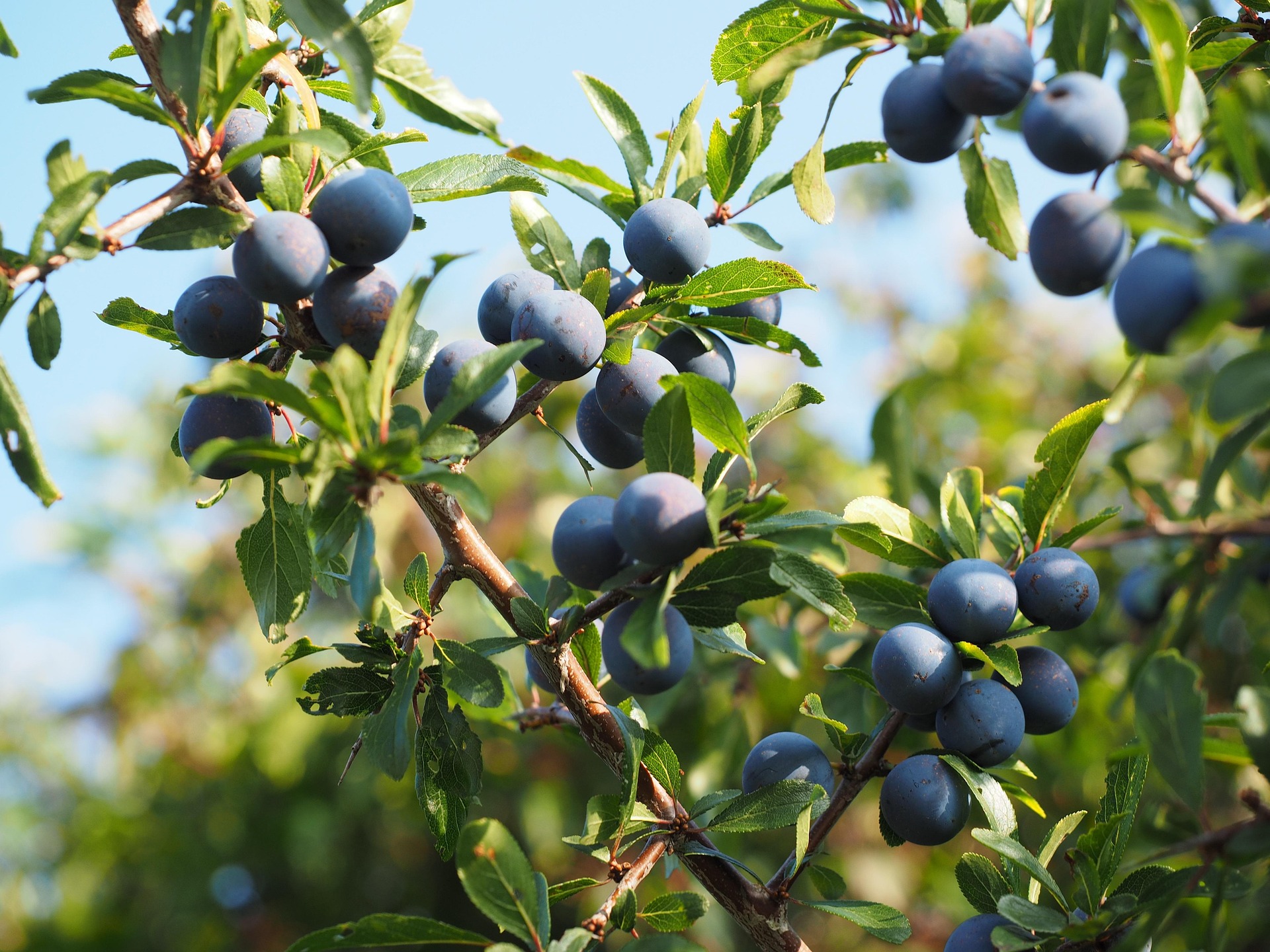Blackthorn (Prunus spinosa)

Early to blossom, blackthorn trees have clouds of snow-white flowers in early spring. They’re best known for their rich, inky, dark fruits used to make a favourite wintry tipple – sloe gin.
Common names:
Blackthorn, Sloe
Scientific name:
Prunus spinosa
Family:
Rosaceae
Origin:
Native
Spiny and densely branched, mature trees can grow to a height of around 6–7m and live for up to 100 years. The dark brown bark is smooth, and twigs form straight side shoots which develop into thorns.
What does blackthorn look like?
Leaves:
Slightly wrinkled, oval, toothed, pointed at the tip and tapered at the base.
Fruits:
After pollination by insects, the flowers develop into blue-black fruits measuring 1cm across.
Where to find blackthorn:
Blackthorn is native to Europe and western Asia. It can also be found in New Zealand and eastern North America. It grows best in moist, well-drained soil and thrives in full sunlight.
The tree grows naturally in scrub, copses and woodland, but is commonly used as a hedging plant.
Value to wildlife:
Early flowering, blackthorn provides a valuable source of nectar and pollen for bees in spring. Its foliage is a food plant for the caterpillars of many moths, including the lackey, magpie, swallow-tailed and yellow-tailed. It is also used by the black and brown hairstreak butterflies. Birds nest among the dense, thorny thickets, eat caterpillars and other insects from the leaves, and feast on the sloes in autumn.
Mythology and symbolism:
Blackthorn was long associated with witchcraft, and it is said that witches’ wands and staffs were made using blackthorn wood.
Uses of blackthorn:
Blackthorn timber is hardwearing and tough, light yellow with a brown heartwood. It was traditionally used for making walking sticks and tool parts. It burns well so is a good choice for firewood.
Traditionally, blackthorn was used in a wealth of remedies including tonics and syrups that ‘cleansed the blood’, aided digestive complaints and eased rheumatism. These tonics and syrups made use of the blackthorn’s bark, flowers and fruit.
These days, the sloes are still used to make wine, preserves and sloe gin